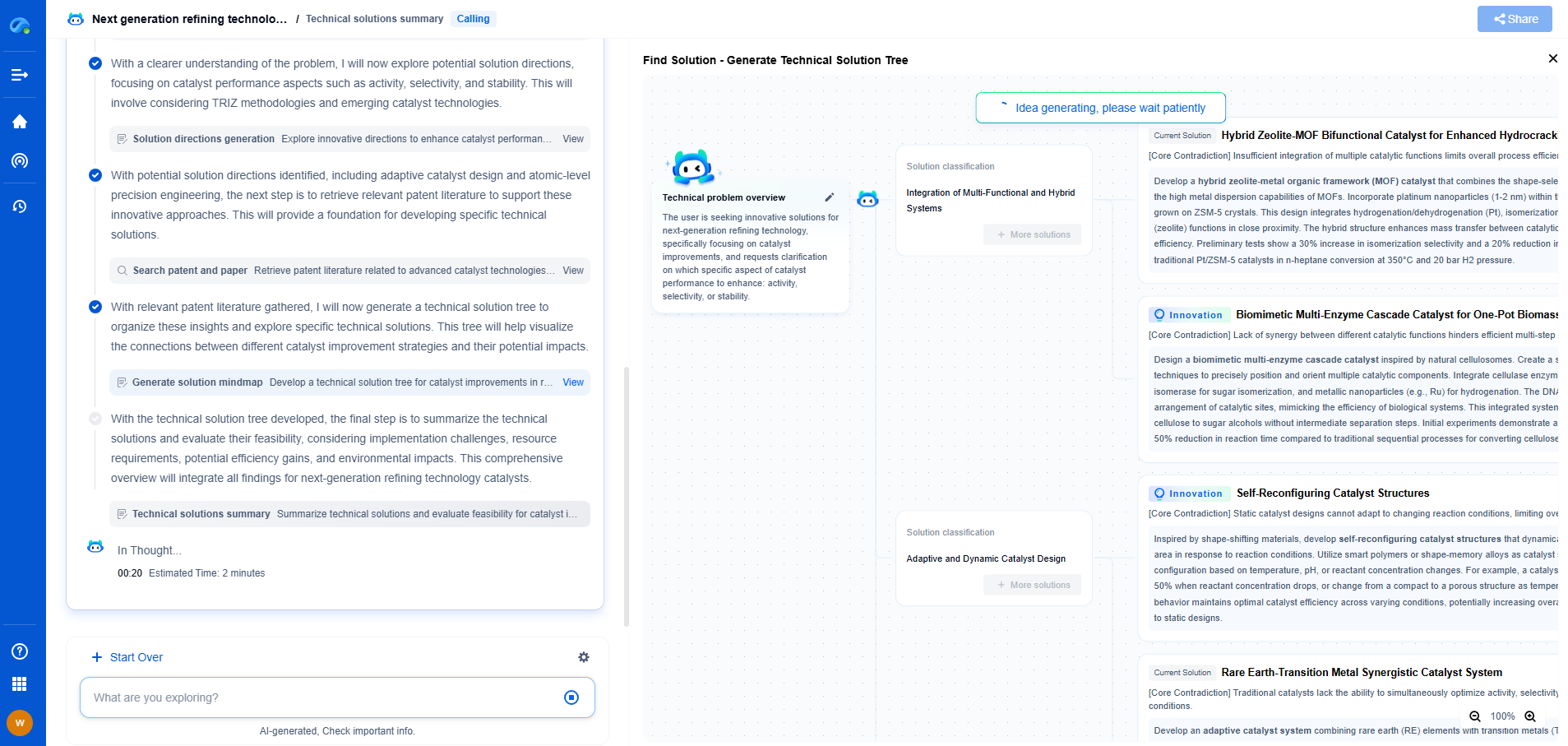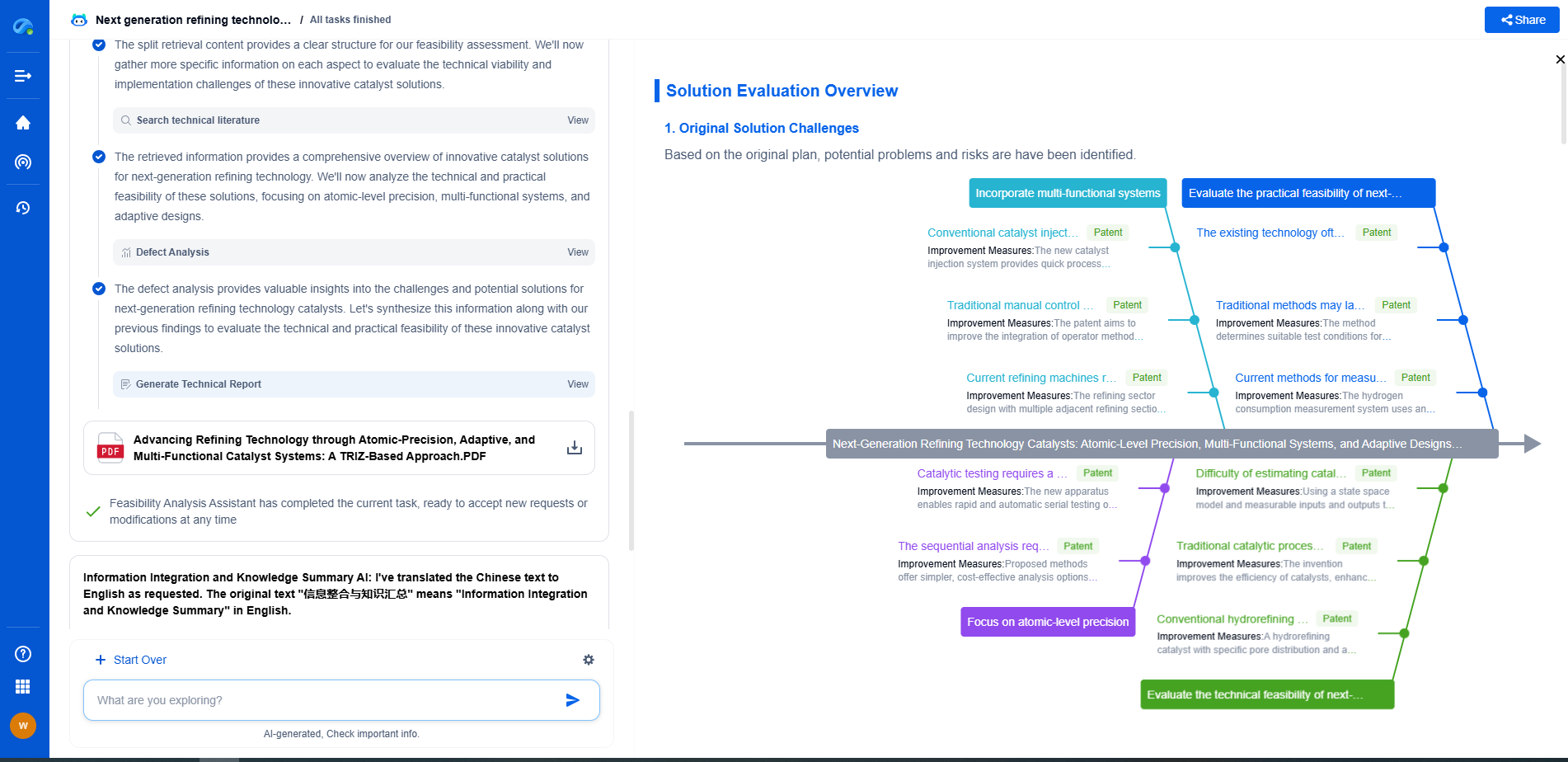What Is Step Response and How Does It Reveal System Behavior?
JUL 9, 2025 |
In the realm of control systems and signal processing, one fundamental concept that often comes into play is the "step response." Understanding the step response of a system can provide valuable insights into the system's behavior, helping engineers and scientists to analyze, design, and optimize various systems effectively. But what exactly is step response, and how does it reveal the underlying characteristics of a system?
Defining Step Response
At its core, the step response of a system is the output behavior in response to a step input. A step input is a sudden change in input from zero to a certain level, usually considered as a unit step function for simplicity. When applied to a system, this input acts as a foundation for analyzing how the system reacts over time. The output resulting from this step input is then observed, recorded, and analyzed to understand the system dynamics.
Analyzing System Dynamics
The step response is crucial for determining several key aspects of a system:
1. **Time Domain Characteristics**: Observing the system's response to a step input allows for the analysis of various time domain characteristics such as rise time, settling time, peak time, and overshoot. These metrics help describe how quickly and accurately a system responds to changes.
2. **Stability**: By examining the form and behavior of the step response, one can infer the stability of the system. A well-damped step response that smoothly approaches a final value indicates a stable system, whereas oscillations or divergence suggest potential instability.
3. **Transient and Steady-State Behavior**: The step response helps distinguish between transient and steady-state behavior. Transients reflect the system's short-term response immediately following the input change, while the steady-state response indicates the long-term behavior.
Applications in System Design and Analysis
The insights gained from step response analysis are invaluable in various fields:
1. **Control Systems**: In control engineering, step response analysis aids in designing controllers that meet specific performance criteria. By understanding how a system naturally reacts to step changes, engineers can tailor controllers to improve performance, reduce overshoot, and ensure stability.
2. **Signal Processing**: In signal processing, step response helps evaluate filters and circuits. It reveals how quickly and accurately a filter can respond to changes, which is essential for applications like audio processing and telecommunications.
3. **Mechanical and Electrical Systems**: Engineers use step response analysis to assess mechanical and electrical systems, such as motors and circuits, to ensure they perform efficiently under various conditions.
Practical Considerations
While the theoretical analysis of step response provides a strong foundation, practical considerations are equally essential:
1. **Model Accuracy**: The accuracy of the step response analysis depends on the fidelity of the mathematical model representing the system. Simplifications and approximations may lead to discrepancies between predicted and actual behavior.
2. **Nonlinearities**: Real-world systems often exhibit nonlinear behavior, complicating the step response analysis. Understanding and accounting for these nonlinearities is crucial for accurate predictions.
3. **Noise and Disturbances**: External factors like noise and disturbances can influence the step response. Engineers must design systems with robustness to minimize these effects.
Concluding Thoughts
Step response analysis is a powerful tool in the arsenal of engineers and scientists seeking to understand and optimize system behavior. By providing insights into time domain characteristics, stability, and transient behavior, it serves as a cornerstone in system design, analysis, and control. As technology advances and systems become increasingly complex, mastering the art of step response analysis will continue to be essential for achieving efficient and reliable system performance.
Navigating the evolving world of electrical measurement—from high-precision signal integrity to advanced test protocols like BERT or TDR—demands more than just expertise; it demands smart tools.
Patsnap Eureka empowers you to keep up—by turning complex patent data, technical parameters, and industry signals into actionable insight. It’s your AI partner for exploring what’s next in test, measurement, and electrical diagnostics.
💡 Try Patsnap Eureka for free and see how it transforms the way you work with electrical measurement technologies.
- R&D
- Intellectual Property
- Life Sciences
- Materials
- Tech Scout
- Unparalleled Data Quality
- Higher Quality Content
- 60% Fewer Hallucinations
Browse by: Latest US Patents, China's latest patents, Technical Efficacy Thesaurus, Application Domain, Technology Topic, Popular Technical Reports.
© 2025 PatSnap. All rights reserved.Legal|Privacy policy|Modern Slavery Act Transparency Statement|Sitemap|About US| Contact US: help@patsnap.com

